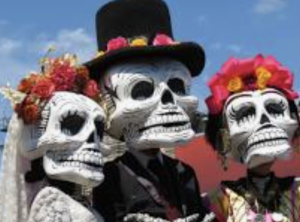An origin myth is a special story about imaginary people meant to answer difficult questions such as, “Where did the seasons first come from?” or “How was earth was formed?”. Myths are passed generation to generation in order to teach a lesson about a people’s customs or virtues. In each of the myths you will hear a story from a different tribal group.
Spark your thinking!
1. Set up your language arts mini spark recording page: #81: Origin Myths-Fire
2. Read these two paragraphs.
Native American or Indigenous peoples of North America do not share a single, unified body of mythology. Each of the many different tribal groups has developed their own stories about the creation of the world, the appearance of the first people, the place of humans in the universe, and the lives and deeds of deities and heroes.
Despite the great variety of Native American mythologies, certain common mythic themes, characters, and stories can be found in many of the cultures. Underlying all the myths is the idea that spiritual forces can be sensed through the natural world—including clouds, winds, plants, and animals. Many stories explain how the actions of gods, heroes, and ancestors gave the earth its present form.
On your recording sheet answer these two questions. What is the purpose of myths? What are some common elements in myths?
3. You will use a chart for the step 4. You can create one on your recording page, print out this PDF, or make your own digital copy to add to your digital recording sheet.

4. Listen to or Read these 4 myths about how fire was created. Fill out your chart for each story.
The First Fire – Cherokee
Coyote Brings Fire to the People – Shoshone
Fire Race- Karuk
How Beaver Stole Fire – Nez Percé
5. For the last task, decide which two origin stories that are the most similar. On your recording page record the titles. Make a bulleted list of 5 ways the stories are the same and then list 5 ways that the stories have differences.
6. Share your language arts mini spark recording page with your teacher/EY coordinator.






 “Hidden Figures” is a biographical book about four African American women who worked as mathematicians at NASA during the Space Race and played pivotal roles in the Apollo program. Their contributions were essential in advancing America’s space exploration efforts, particularly during the historic Apollo missions to the Moon
“Hidden Figures” is a biographical book about four African American women who worked as mathematicians at NASA during the Space Race and played pivotal roles in the Apollo program. Their contributions were essential in advancing America’s space exploration efforts, particularly during the historic Apollo missions to the Moon

 Friendly numbers are a special type of number that have a unique connection with other numbers. To understand this relationship, we will add up all of the factors of a number and then we look at the index of a number and compare it to the index of another number. Check it out in this mini spark.
Friendly numbers are a special type of number that have a unique connection with other numbers. To understand this relationship, we will add up all of the factors of a number and then we look at the index of a number and compare it to the index of another number. Check it out in this mini spark. Are you curious about geography? Check out the Wonderopolis articles for Wonders all about the world around us. Check out the specific Wonders below that will get your brain thinking about all things geography!
Are you curious about geography? Check out the Wonderopolis articles for Wonders all about the world around us. Check out the specific Wonders below that will get your brain thinking about all things geography! Fit words into a grid in this popular game, often seen in puzzle magazines as fill-ins. The grid looks like a crossword, but there are no normal clues. Instead you must find the right place in the grid for each word from a given list.
Fit words into a grid in this popular game, often seen in puzzle magazines as fill-ins. The grid looks like a crossword, but there are no normal clues. Instead you must find the right place in the grid for each word from a given list. There is a wealth of information when it comes to volleyball! Whether you’re examining individual player statistics, team standings, or breaking down a specific match… MATH IS EVERYWHERE IN VOLLEYBALL!
There is a wealth of information when it comes to volleyball! Whether you’re examining individual player statistics, team standings, or breaking down a specific match… MATH IS EVERYWHERE IN VOLLEYBALL!

